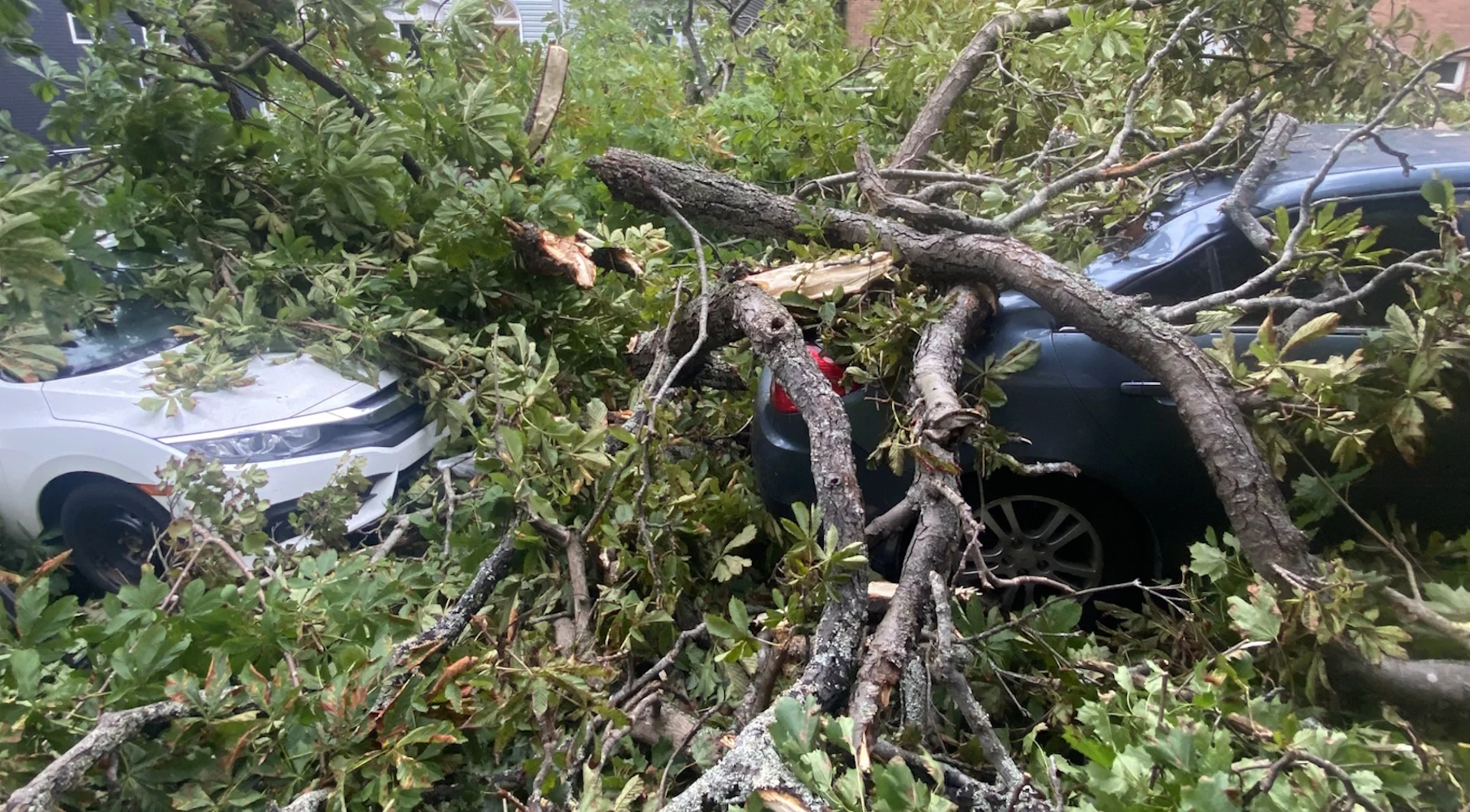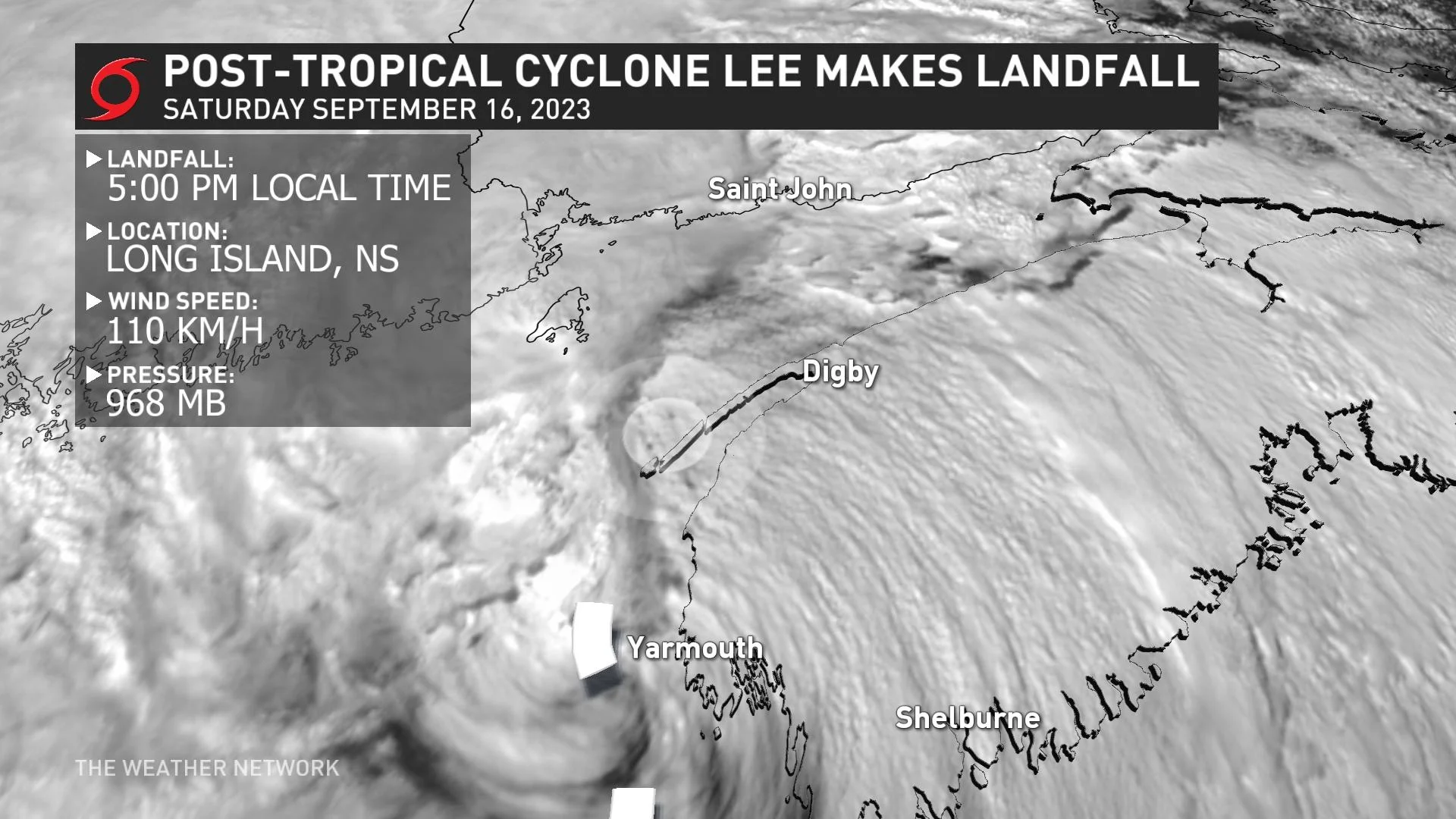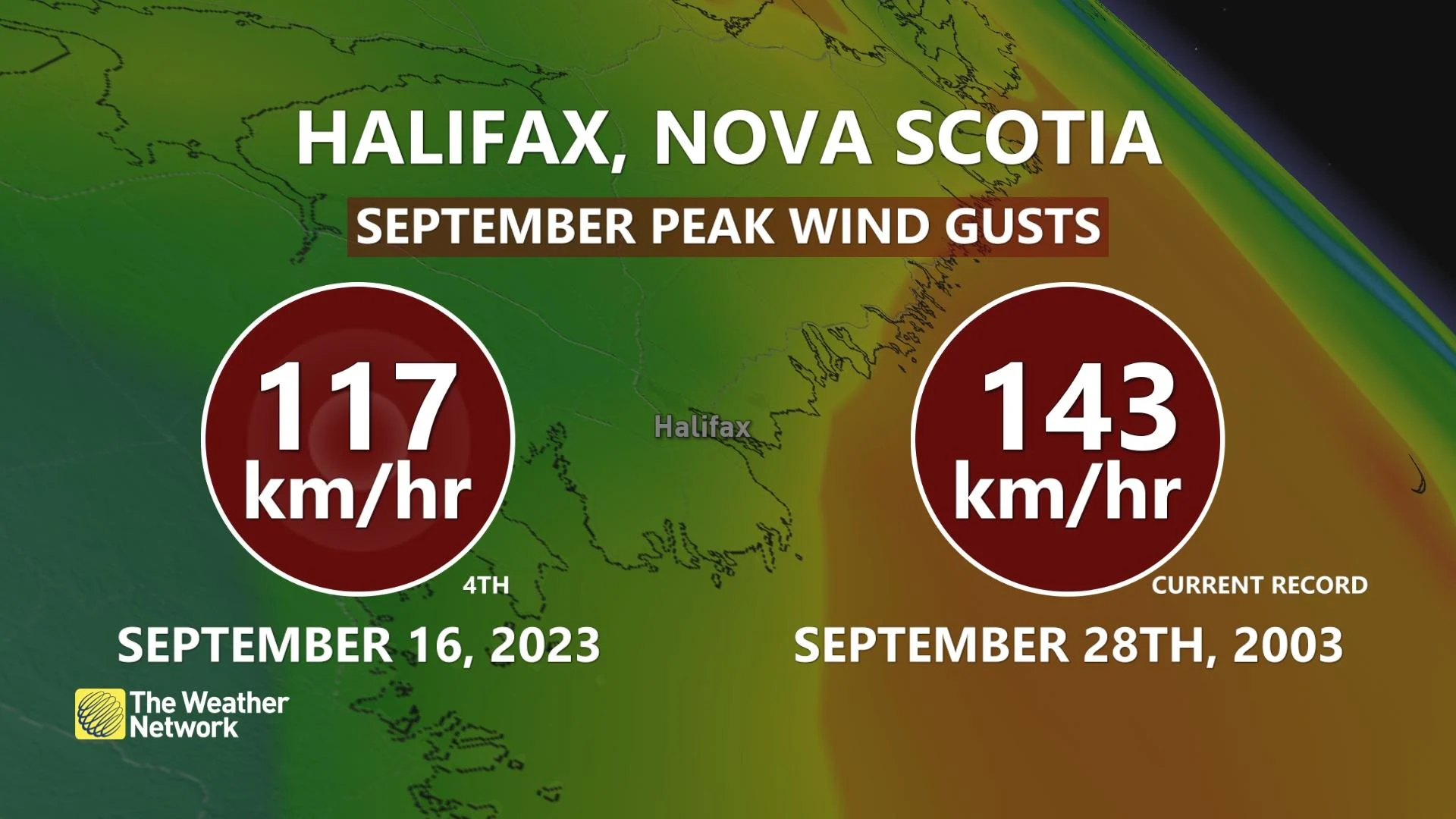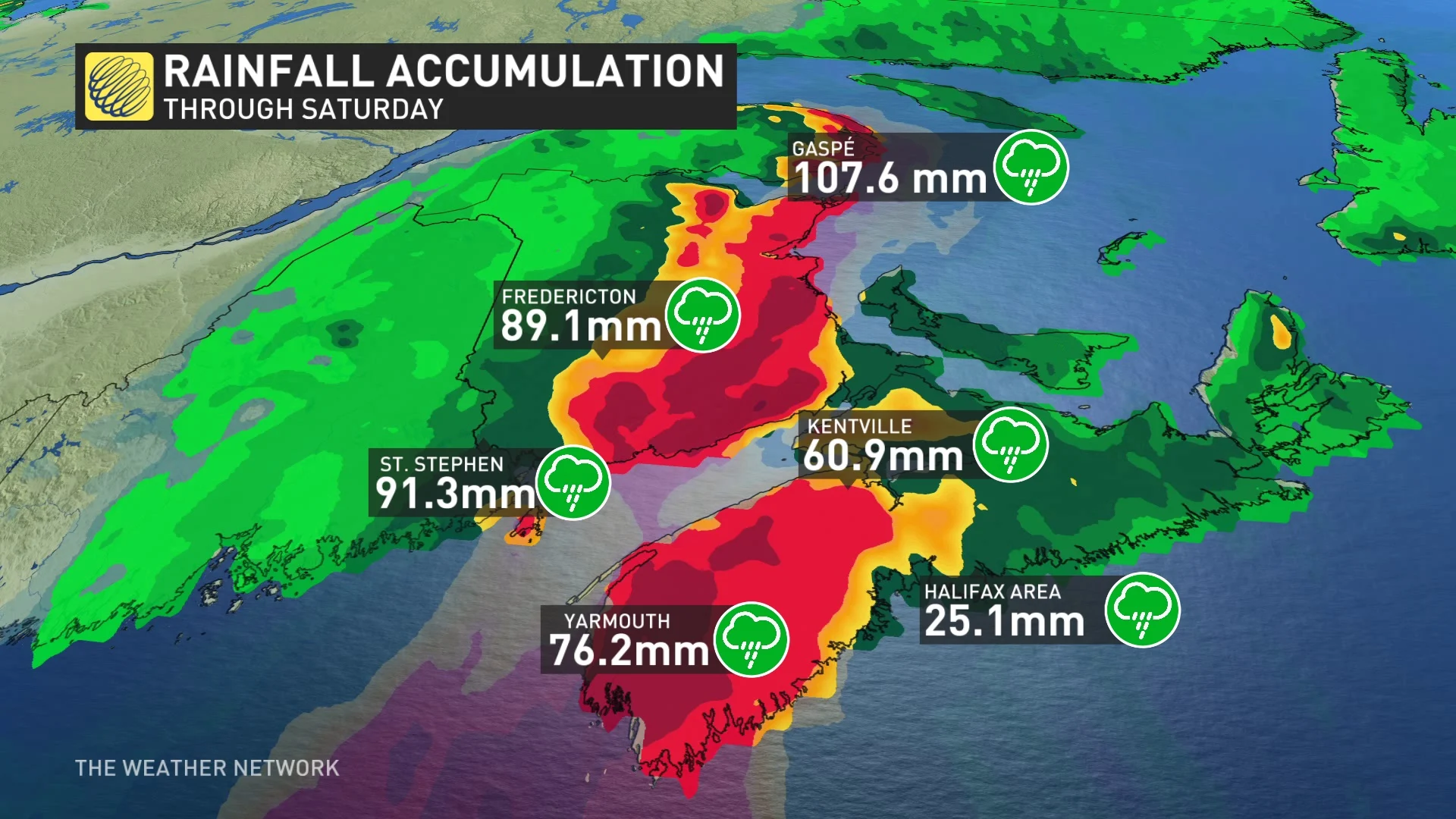
PHOTOS: Thousands left in the dark in the Maritimes after Lee's wrath
While it took Lee some time to get to the Maritimes, it was much quicker to leave behind significant impacts this weekend -- widespread power outages, wind damage, and flooding
Visit The Weather Network's hurricane hub to keep up with the latest on tropical developments in Canada and around the world
It took more than two weeks for Lee to reach the Maritimes, but when it finally did, it certainly left its mark on the region.
While power restoration efforts continue to reinstate electricity Sunday morning, roughly 70,000 customers across the Maritimes are still in the dark after post-tropical storm Lee’s powerful winds knocked down trees and power lines throughout the region.
The peak of Lee’s impacts are over, but some of them will linger in Atlantic Canada Sunday as affected communities in the Maritimes begin to take stock of the damage.
RELATED: PHOTOS: Powerful Lee leaves impactful mark on the Maritimes, one injured
The centre of post-tropical storm Lee officially made landfall on Long Island in extreme southwestern Nova Scotia at 4 p.m. local time Saturday, according to the U.S. National Hurricane Center (NHC). Lee's centre moved over the Bay of Fundy and made a second landfall in New Brunswick Saturday evening.

Numerous flights, events, and ferry crossings were cancelled across the Maritimes. Some of the ferry crossings will become operational again Sunday. Peggy’s Cove will remain closed to the public Sunday due to ongoing power outages.
DON'T MISS: Storm surge, winds cause damage in N.S. South Shore communities
WATCH: House shifted off its foundation as Lee hits Peggy's Cove
Multiple road closures were reported throughout Nova Scotia and New Brunswick as a result of standing water and fallen trees. One injury was also reported as a result of the storm. A motorist suffered non-life-threatening injuries when a pine tree fell on his vehicle while he was driving into Blockhouse, N.S., reported by CBC News.
Halifax Airport reported a wind gust of 117 km/h on Saturday, an impressively high reading given its distance from the coast. That's the strongest wind gust for the region since Hurricane Fiona last September. A buoy just offshore measured waves higher than 10 metres during the height of the storm.

DON'T MISS: Storm surge, winds cause damage in N.S. South Shore communities
In Nova Scotia's South Shore, damage was reported as a result of the storm surge and intense wind gusts. Several boats have broken their moorings, including a catamaran that was wedged against the rocks at the shoreline, as reported by CBC News.
In New Brunswick, numerous traffic lights were out and some roadways were washed out and impassible.

Below is just a selection of visuals making the rounds on social media currently.











